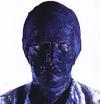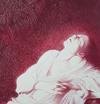Texte und Essays
Benedikt Taschen Verlag GmbH – 30. November 1991
Benedikt Taschen Verlag GmbH, 1992
GOTTFRIED HELNWEIN - HORROR AND THE TRANSCENDENT
"Rock music, films and comic strips are the art of the 20th century: basic artforms that make a powerful impact, with elemental potency and intensity. These are the very qualities I have tended to miss in most approved works of high art. In comparison, the latter are generally bloodless and boring, and have little connection with real life and people." When Gottfried Helnwein made this assessment of contemporary art in 1990, he had long since shown in his own art that he was way ahead of his times. Yet again.
Helnwein did not feel himself obliged to become a rock musician. Nor has he ever drawn a comic strip. Films about him, which have won many awards, have dealt with his life and work. Even if they were as exciting as the best thriller movies, they still served purely as the medium of his true passion, and were not the thing itself. Yet they were what made him world famous: images that froze the blood in people's veins, electrifying images that send a current deep into the eye, evocative and immense, of a vast compass that is unparalleled. There is neither rock music nor comic strip nor film that comes anywhere near them.
The facts of the matter are that, following a spectacular debut in the 1970s, Gottfried Helnwein - born in Vienna in 1948 - went on in the decade that followed to draw his subject matter extensively from popular culture. He tackled the urgent issues of the day. He confronted the problems that preoccupied people and gave nurture to their dreams. Taking idols such as James Dean, Mick Jagger, Marlene Dietrich and Clint Eastwood, or subjects such as rape, clinical deformity in a monstrous society, or suicide, Helnwein touched the nerve of the age and laid it bare for all to see. That is to say, he gave it artistic expression.
These pictures made Gottfried Helnwein himself a star artist. Yet still he continued to follow the goal he had set himself, a supreme aim that has forever had him taking new and astonishing approaches to art. His creative power is proven not least by his ever new ability to appeal to a wide public, to fascinate and shock and also to delight. Effect, not lack of effect, is the criterion. Helnwein aims to reach more than only a tiny and shrinking elite of art experts. He is out to reach everyone. And for this reason his paintings, which adhere to the centuries-old tried and tested laws of rhetoric, have a far greater aesthetic affinity with art of the early 19th century than with more recent art-for-art's-sake work - for in many of his pictures (which have wide currency as posters and album covers) he skilfully uses available formulae to offer something to every group that can be defined in terms of the sociology of art.
Thus, for instance, those with traditional tastes can be impressed by the matchless technical expertise of his paintings, which need fear no comparison with the great masterpieces of the past. Those whose concern is with society and politics are satisfied by Helnwein's work of protest and commitment, his opposition to hypocrisy and environmental pollution and armaments, his antagonism to power politics. And for the young he preserves icons. Commenting on the covers he has done for many magazines worldwide, such as Time, Esquire, Rolling Stone, Lui, Playboy, L'Espresso, Spiegel or Stern, Helnwein had observed:
"I should feel frustrated if my pictures were only to reach a few hundred people, and not the millions any skier or footballer reaches."
Gottfried Helnwein's very appearance can be seen as a pitch at the mass media. In his attention-getting outfits, he lives the life that accords with the work of a major modern art star. His image had become a trademark, an essential part of his work. The artistic stance is of course diametrically opposed to the prevailing view of an artist's labours as an exclusive business: but then, that is precisely what Helnwein is out to avoid. Rather, the air of immediacy in Helnwein's pictures remains so fresh and abiding because he has never quit the real realm of the here-and-now. It is as if his work were presenting the apocalypse of civilization in a new light. Critics have often dubbed him the Boris Karloff of the paintbrush, or a shocker artist with a soft centre.
But, whatever, clichés the press have come up with, they have always been far wide of the nature of his real genius. Barely have we supposed we've found the formula that will express him but he's eluded our grasp once again. For instance, when the scarred and mistreated children of his early work (drawn from his won childhood in post-War Austria) threatened to become a macabre chliché in themselves, he promptly changed genre.
But anyone who was imagining that the Helnwein of the early Eighties, the Helnwein of numerous star portraits, had become a more harmless creature, was in for a rude awakening. Whether the subject was John F. Kennedy, Andy Warhol, William Burroughs or Keith Richards, Helnwein's scalpel gaze invariably cut and penetrated beneath the surface of faces that conformed to the demands of cosmetics and ideology.
Then in the mid-Eighties, large-format diptychs, triptychs and multi-panel works, as well as the hundred-metre-long street of images "Night of 9th November" (a memorial for the fiftieth anniversary of the Nazi Kristallnacht in Germany in 1938), seamlessly met his art's abiding central concern, a concern which (for all his stylistic changes) he has never abandoned: the life of humanity, seen from every angle. Not a thing is omitted. Horror and the transcendent area s closely juxtaposed as the trivial and the sublime. Full of admiration, Norman Mailer noted: "Helnwein is one of the few exciting painters we have today." And who would want to contradict him? (Pg. 6)
Pastels
From 1987 to 1989 Helnwein did a series of monochrome, representational pastels as well as more abstract works, in which magically hazed heads and grotesquely distorted bodies are seen aglow against dark backgrounds. In these works, Gottfried Helnwein's characteristic juxtaposition of the trivial and the tragic is again apparent. As so often before, documentary photography and the daily tidal wave of media images account for his major inspiration. Two of the pastels were titled "Modern Sleep" after a photo by Weegee, the American sensationalist photojournalist. Police photos of mistreated children and dead drug addicts in the Bronx in New York often served as Helnwein's originals. And he also artistically processed a photo taken by a Red Army soldier in 1945, at Hitler's headquarters in Berlin, of the body of Nazi propaganda minister Josef Goebbels - burnt beyond recognition.
If Helnwein had practised a detail fetishism of kinds in his earlier hyperrealism, however, he was now aiming at an iridescent blur that acquired contour purely from colour and left only a pale, ghostly outline of a skull ("Burnt Angel"). In his pictures of humans at this period, Helnwein largely eliminated individual features and transformed facial appearances into a bright, visionary phenomenon of light. The human figure is no longer detailed: rather, it is adumbrated as an area. Spatial illusion is almost entirely dispensed with, and the contours of the figures blend into the background.
The artist is returning the figure to the material qualities of colour from which it was first formed. The main theme of his art, however, still remains Man as victim and villain - and the hidden sides of things which have to be revealed. (Pg. 30)
"Helnwein" 1992, Benedikt Taschen Verlag GmbH, ISBN 3-8228-9352-8
Gottfried Helnwein, Horror and the Transcendent
1992 Benedikt Taschen Verlag GmbH Andreas Mäckler


